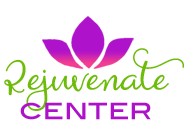Introduction
Acupuncture involves putting small, solid, metallic needles into the skin and stimulating them electrically or with mild hand movements.
Traditional Chinese medicine includes centuries-old acupuncture. Traditional Chinese medicine practitioners believe the body contains 2,000 acupuncture sites connected by meridians. These channels generate Qi (pronounced “chee”), which sustains bodily health. A disruption in energy flow may cause disease. Targeting certain Qi locations with acupuncture improves wellness.
Studies show acupuncture Phoenix helps various ailments.
Not everyone can use acupuncture. Talk to your doctor before seeing an acupuncturist and search for a licenced practitioner with the right training.
What Does Acupuncture Treat?
Numerous health conditions may benefit from acupuncture treatment. People most often use it to treat chronic (long-term) pain, like:
- Arthritis.
- Discomfort in the back, neck, or muscles.
- Migraines and headaches.
- Discomfort in the knees.
- Cramps associated with menstruation.
- Injuries sustained in sports.
- Facial pain as well as other neuropathic pain.
Other medical issues for which acupuncture may be beneficial are:
- Negative consequences of cancer and therapy.
- Immune system issues.
- Fertility problems.
- Syndrome of the irritable bowel (IBS).
- Hot flashes with menopause.
- Discomforts associated with pregnancy.
- Overuse syndrome and illnesses involving repetitive strain.
Are there Different Types of Acupuncture?
Practitioners of more traditional/ancient Chinese medicine only concentrate on manipulating energy flow, or qi (pronounced “chee”), through your body. Using needles to activate your body’s processes, modern acupuncture applies Western medicine. Many acupuncturists blend the two techniques.
Another method of treating myofascial pain is acupuncture. This is a common disease affecting the muscles and connective tissue. Trigger points are painful, taut knots that often occur in strained, damaged muscles, or under stress. Referred pain occurs when a trigger point in one muscle refers pain to a different area of your body.
For the treatment of myofascial pain, acupuncturists may use trigger point therapy. To attempt to “unknot” the trigger location, they use needles.
Let’s have a slight look at the type of acupuncture
Myofascial Pain
Myofascial pain syndrome is a persistent muscle and fascia disorder. Pressing muscle trigger points (knots) generates localised or referred pain in myofascial pain syndrome. Fibromyalgia and myofascial pain syndrome are separate disorders.
Trigger Point
Trigger points, or “knots” in your muscles, are the main source of myofascial pain. A trigger point injection (TPI) may help ease this discomfort. TPIs are widespread and typically secure.
Procedure Details
How does Acupuncture Work?
Qi is your body’s energy in Chinese medicine. Chinese medicine practitioners believe qi interruptions cause energy imbalances and sickness.
Some kinds of acupuncture use needles to rebalance qi at bodily acupoints. The body has hundreds of acupoints along 14 primary meridians, or energy pathways.
The needles activate your immune and central neurological systems:
- Respond to sickness.
- Reset your body.
- Release endorphins, natural painkillers, and neurotransmitters, nerve impulse regulators.
What Occurs During Acupuncture?
Your acupuncturist will discuss your ailment at your initial consultation. Then, they’ll check for acupuncture-responsive locations. The acupuncturist will insert needles into skin spots across your body.
The hair-thin acupuncture needles are sterile and disposable. Acupuncturists insert needles from a fraction to two inches. Needles remain in for a few to 20 minutes.
Is Acupuncture Painful?
Each needle may puncture lightly. It hurts less than vaccines or blood draws. Acupuncture needles are thinner than medical ones. Solid, not hollow.
Needles may induce dull pains or tingling. When you feel heavy or numb, tell your doctor. Treatment typically works when such feelings occur.
What Happens After an Acupuncture Treatment?
Your first acupuncture visit may be relaxing, so you may prefer a ride home. If that’s not feasible, relax for 5-10 minutes before driving. Your doctor may advise you to rest for a day or two after each session.
Risks / Benefits
What are the Benefits of Acupuncture?
Benefits of acupuncture include the treatment of many medical disorders and long-term (chronic) pain. Many individuals use acupuncture to treat pain all throughout their bodies, including arthritis, migraines, and back discomfort. Research has also shown that acupuncture might be an effective therapy for several ailments, such as immune system problems, infertility, and menopausal symptoms.
What are the Risks or Complications of Acupuncture?
Acupuncture has extremely few problems or adverse effects when performed by a skilled expert.
In the United States, the FDA regulates acupuncture needles. Every needle must be steel, solid, sterile, nontoxic, and properly marked by the agency’s specifications. Needles used in acupuncture are only for use by licenced practitioners. Practitioners discard the needles after just one usage.
It might be dangerous to get acupuncture from untrained providers. Healthcare professionals lacking expertise or using non-sterile needles run the risk of causing infections, organ punctures, and harm to the central nervous system.
End note:
We’re only learning about acupuncture’s impacts. Research from users suggests it may improve various ailments and symptoms. If you decide to try acupuncture, be sure the practitioner is qualified, skilled, and clean.
